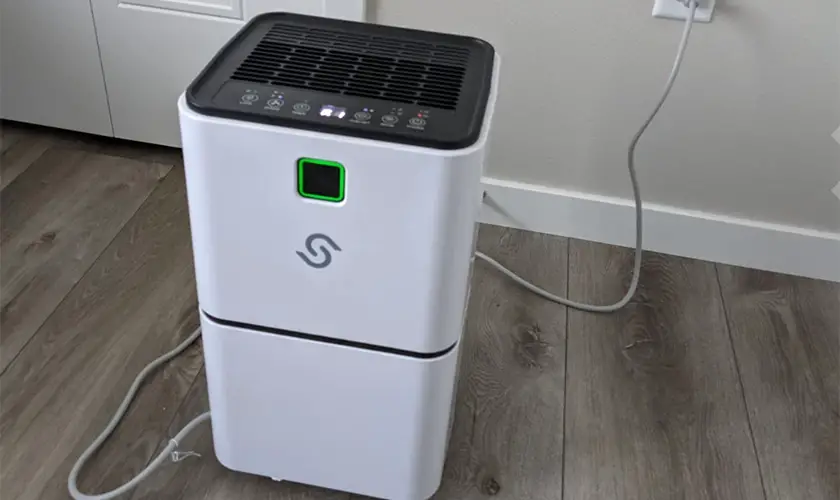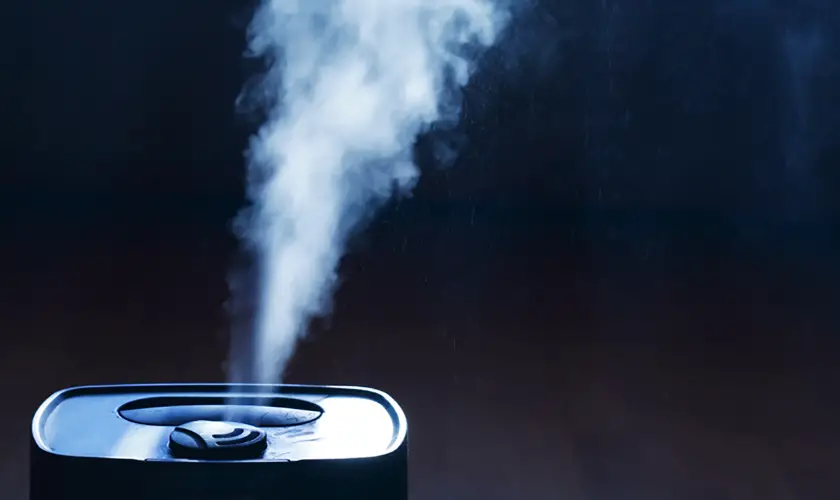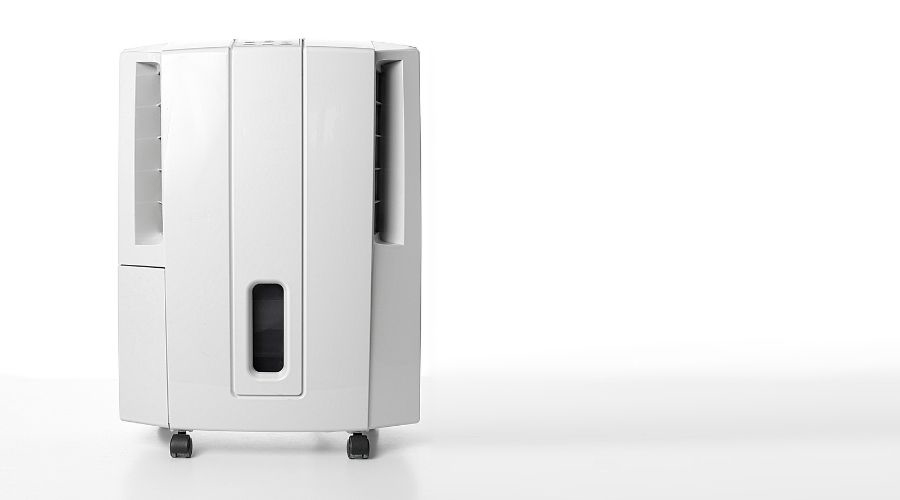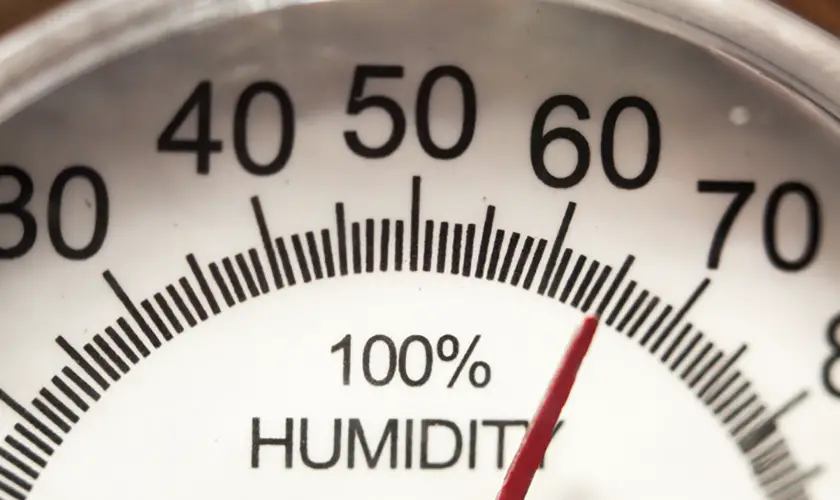
If your home experiences humidity over 60%, you need a home dehumidifier. But what is the best dehumidifier setting that you should use to make your home healthy and comfortable?
You should set a home dehumidifier between 30% and 50% humidity to keep indoor air quality and protect your family’s health. Most experts agree that the best dehumidifier setting is 45%. Air that is either too humid or dry can cause several health issues. Optimal humidity keeps dust mites and mold from developing, preventing you from feeling the dry air’s effects.
Difference Between Humidity and Relative Humidity
Humidity is the amount of water vapor in the air. The higher the humidity, the more water there is in the air. Water evaporates from lakes, rivers, seas, and other ground sources worldwide and is carried to different locations via wind. When this happens, the moisture in the air combines with its various components.
Relative humidity measures how much water vapor is in the air compared to the maximum amount of water vapor the air can hold at a given temperature. The warmer the air, the less water vapor it can hold, so we’ll see a lower relative humidity.
The relative humidity is the number we are concerned about within our homes. The water vapor in the air impacts our comfort, health, and home.
The Benefits of a Dehumidifier in Your Home
A dehumidifier is helpful if damp stains on the ceilings, walls, or rooms are stuffy. Mold may grow on wood beams, plaster, and leather furniture if there is too much moisture.
These are the primary benefits of using a dehumidifier in your home:
- Reduce the musty odors that can come with mold and mildew
- Reduce dust mites inside your home
- Reducing the likelihood of mold growth on furniture, drapes, and apparel.
- Reduces the symptoms of allergies and asthma
- Make your home more comfortable by removing excess moisture in the air
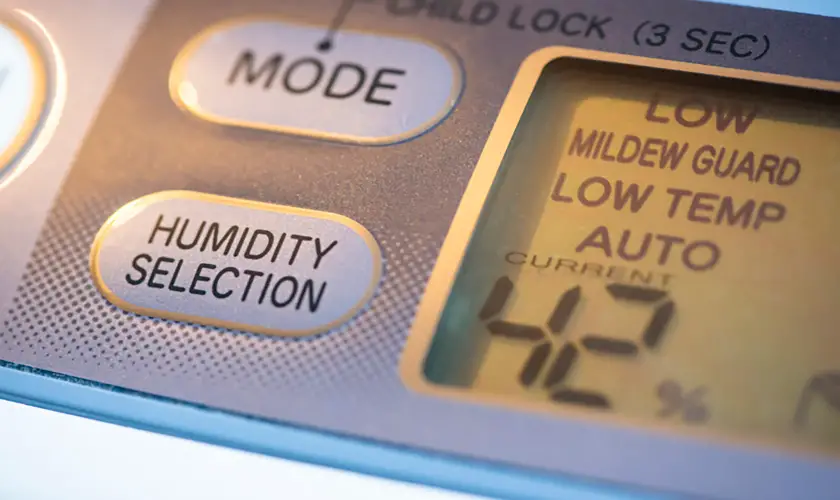
How Do I Know if My Home has High Humidity?
If you suspect your home has high humidity, there are a few ways to test the moisture in your home. You can buy an inexpensive hygrometer at most hardware stores to measure the relative humidity in your home.
Observing condensation on your windows is another way to tell if the air in your home is too humid. If you see water droplets inside your windows, the air in your home is likely too moist.
You can also look for mold or mildew in your home. If you see mold or mildew on walls, furniture, or clothing, it’s a sign that the humidity in your home is too high.
How Do I Know if My Home has Low Humidity?
If the air in your home feels dry, it may be because the humidity is too low. You can use a hygrometer to measure the relative humidity in your home. If the relative humidity is below 30%, the air in your home is too dry.
If the air in your home is too dry, observe the condition of your skin and lips. If your skin feels dry and cracked or your lips are chapped, it’s a sign that the humidity in your home is too low.
You can also look for static electricity in your home. If you see sparks or feel shocks when you touch metal objects, it’s a sign that the humidity in your home is too low.
If you have low humidity issues, you must use a humidifier rather than a dehumidifier.
Best Dehumidifier Settings Help with Health Issues
The use of a dehumidifier might be able to solve the following issues in your house:
- Reduce or eliminate condensation on windows
- Reduce or eliminate mildew and mold growth on walls, ceilings, flooring, and furniture
- Lower high wood moisture content, which can cause wood decay and structural damage
- Reduce or eliminate cracking and peeling paint on walls and ceiling
- Prevent mold growth inside your HVAC system ductwork
- Reduces moisture that attracts wood-destroying organisms like termites, carpenter ants, and wood borer beetles
Dehumidifiers benefit people with allergies, asthma, and other respiratory problems. Excess moisture in the air can make these health problems worse. By removing excess moisture from the air, dehumidifiers can help improve your indoor air quality and reduce symptoms.
If you have ever had a cold or the flu, you know that being in a humid environment can worsen your symptoms. The same is true for allergies and asthma. If the air is too moist, it can make your symptoms flare up. Dehumidifiers can help by reducing the humidity in the air, making it easier to breathe.
Dehumidifiers also help reduce dust mites in your home. Dust mites are tiny creatures that thrive in humid environments. They are too small to see and feed on the dead skin cells we shed daily. Dust mites are a common trigger for allergies and asthma. By reducing the humidity in your home, you can also reduce the number of dust mites.
Dehumidifiers can assist with a variety of respiratory issues, including the following:
- Allergies and Sinus Infections: By reducing moisture in the air, dehumidifiers can help lessen allergens such as dust mites and mold. As a result, people with allergies may be able to breathe better and experience fewer sinus infections, nosebleeds, and nasal congestion. 1
- Asthma: A dehumidifier can reduce the moisture levels in the air, making breathing easier. It also prevents pollutants from remaining in the atmosphere.
- Bronchitis: They can also assist with bronchitis symptoms and speed up recovery by removing excess moisture from the air.
Optimal humidity levels are better for everyone, especially babies and young children with allergies or asthma.
How Does Weather Affect Indoor Humidity?
The summer heat is naturally more humid, making it stickier and unpleasant. The air in winter is chilly and dry. Heaters add to the problem by drying out the house.
Pests are attracted to humidity, as well as termites and carpenter ants. Many species of insects find moisture appealing.
Prioritize your comfort by installing a whole-home dehumidifier, particularly if you have a damp crawl space or basement.
When installing a crawl space dehumidifier, you’ll also need to seal the crawl space by sealing off the vents and covering all the ground.
When installing a basement dehumidifier, ensure the unit is elevated to drain properly.
Best Dehumidifier Setting FAQs
What Should the Dehumidifier be set at?
Ideally, you should set your dehumidifier between 30% and 50%. 45% is a good dehumidifier setting that works well for most people.
What Should I set my Dehumidifier at in Summer?
Because of the increased moisture levels, crawl spaces and basements are more susceptible to mold and mildew growth during summer. By setting your dehumidifier to 50% or lower, you can reduce the moisture in your home and prevent mold and mildew growth.
What Should the Dehumidifier be set at in Winter?
If you must run your dehumidifier in winter, keep the percentage between 30% to 50%. Avoid using your dehumidifier when cold weather temperatures are below 60 degrees Fahrenheit.
Should I run My Dehumidifier on High or Low?
Running a dehumidifier at a low setting is more energy-efficient than running it on a high setting. If your dehumidifier has a digital humidistat, it will automatically adjust to the most efficient setting and remove the most moisture from the air.


